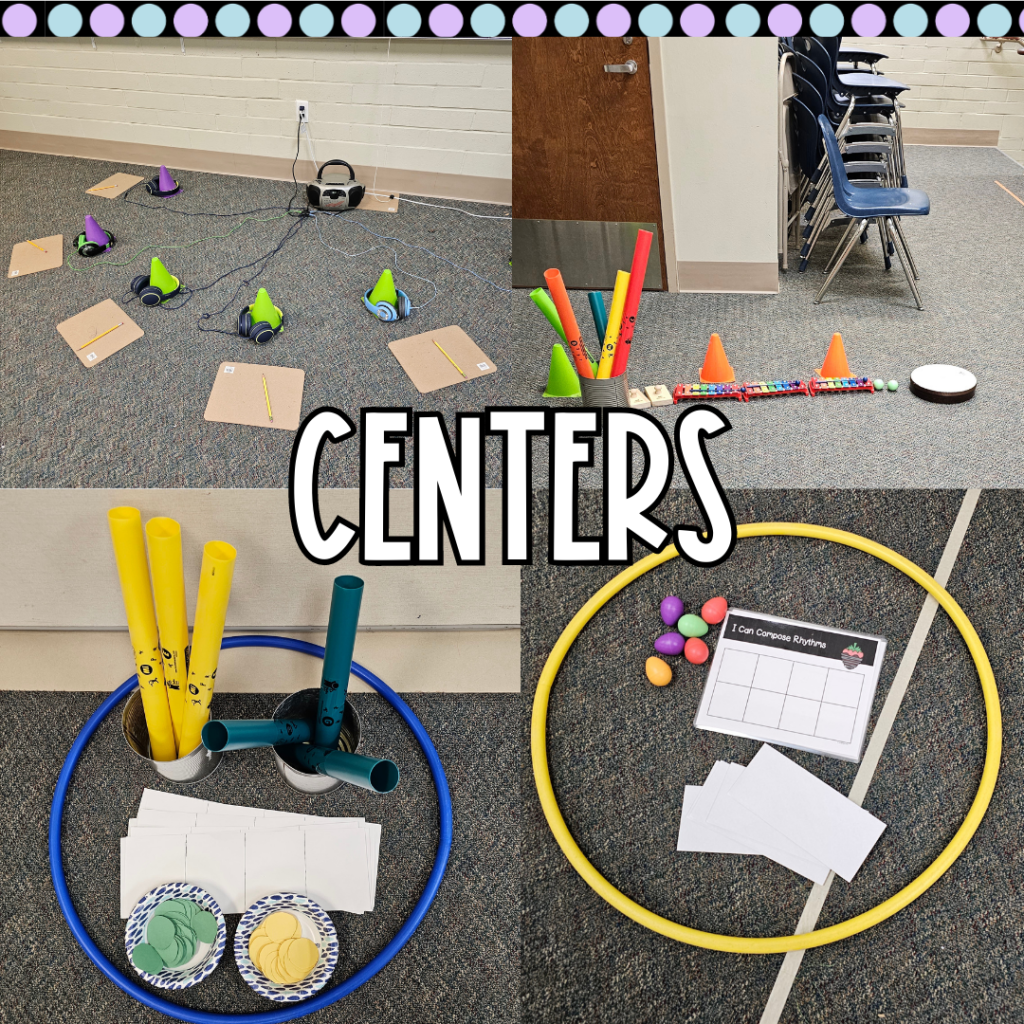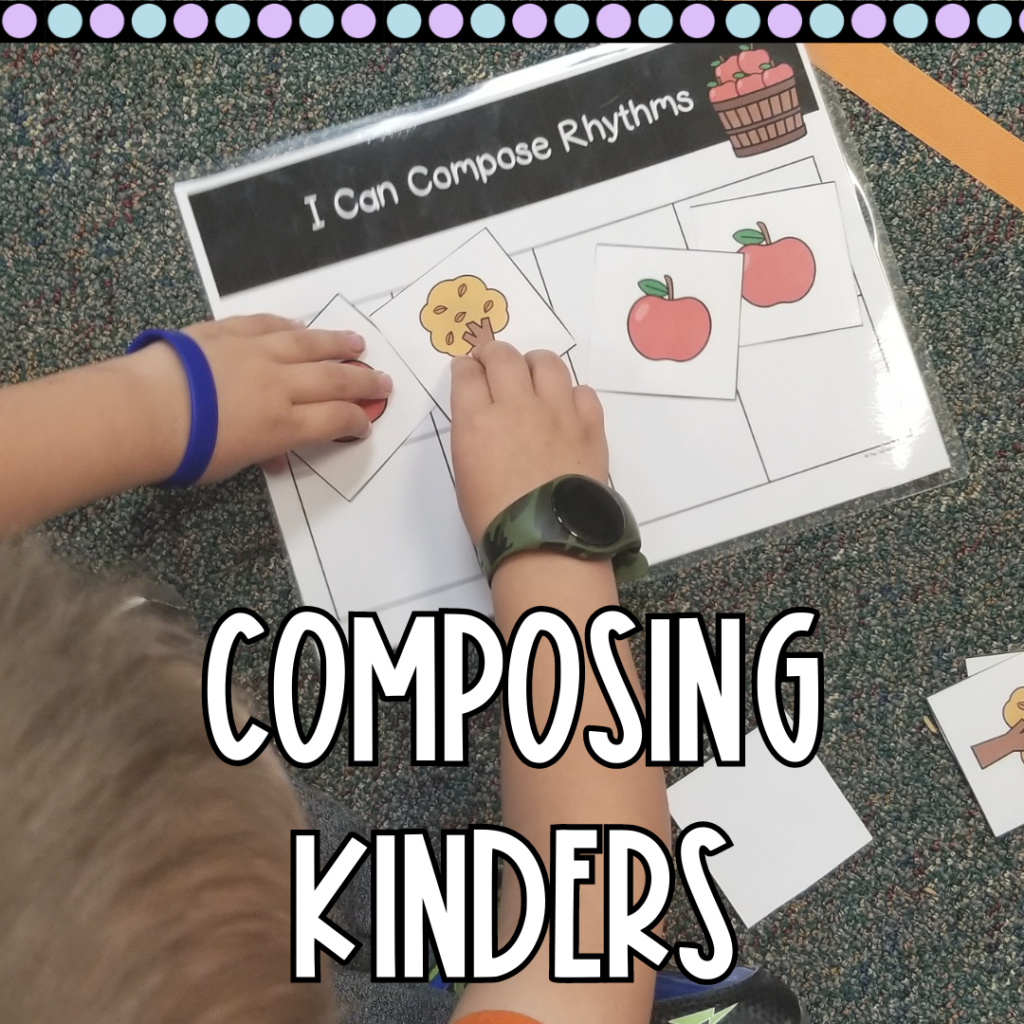Kindergarten Music Centers: High Low Composing with Boomwhackers
Our school district has been focusing on utilizing High-Impact Instructional Strategies in the classroom. For our district elementary music educator collaboration day, I was able to present this composing with Boomwhackers * activity with my PLC. It released the responsibly of learning to students, along with the use of manipulatives for instruction. This activity also provided students with the opportunity to explain their thinking and ask questions about and explore higher-level music concepts. Many students experimented with musical concepts beyond the scope of high/low – and I loved that! Kindergarten centers have become my favorite way for students to practice what we are learning!
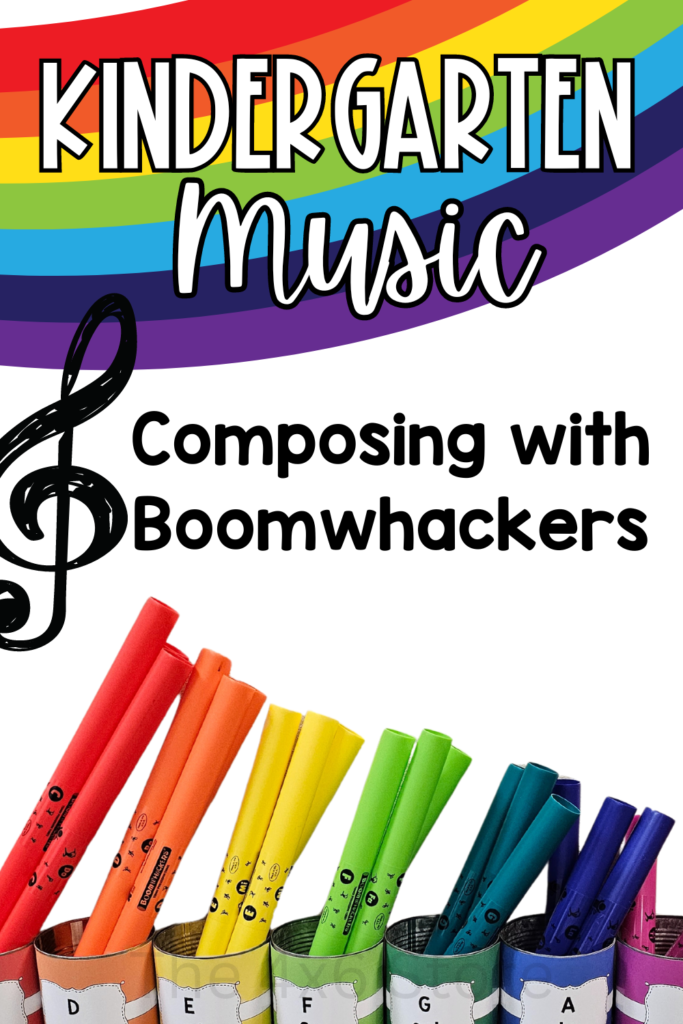
The first time I tried this activity, I was absolutely blown away with its success. I anticipated most students to use quarter note rhythms in pretty basic patterns, but students began exploring using eighth notes – and even chords!
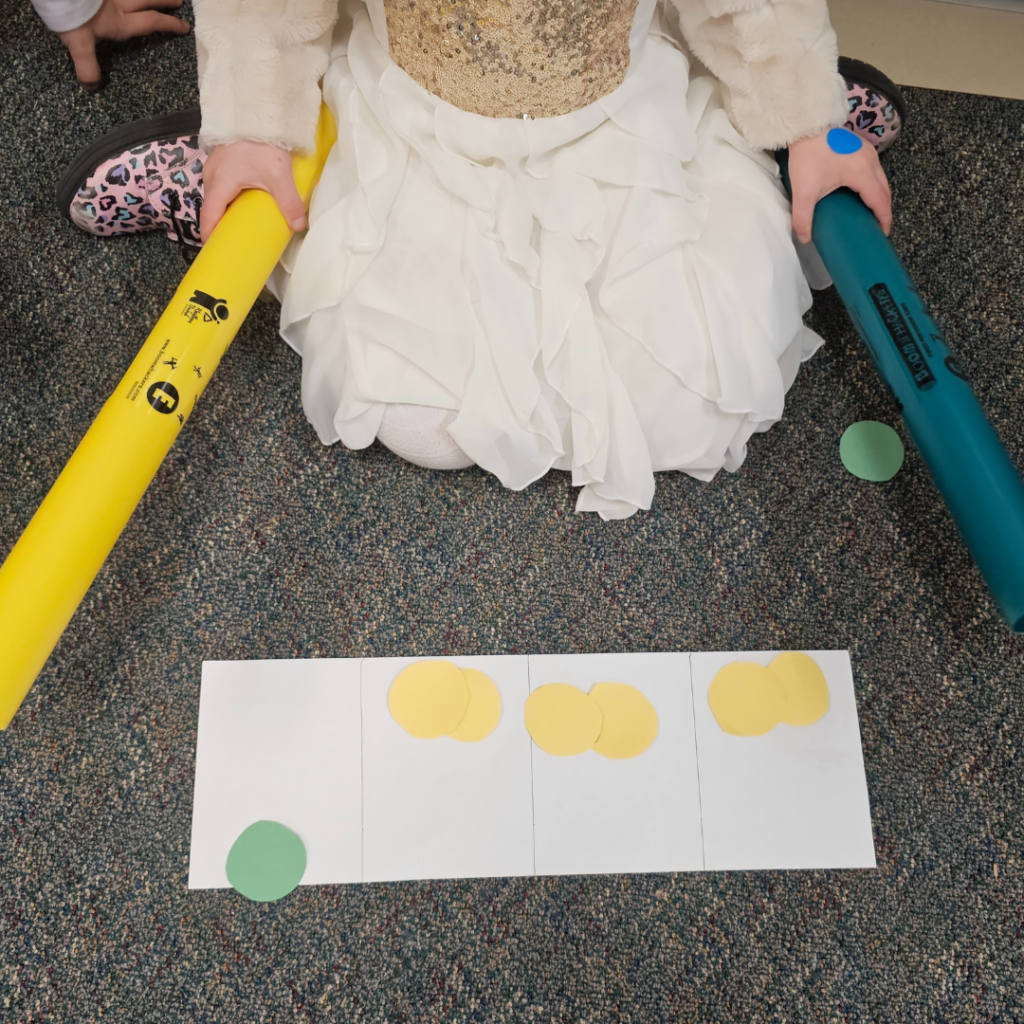
As an Amazon Associate I earn from qualifying purchases at no extra cost to you! All affiliate links will be marked with an *.
Previous High Low Knowledge
Before attempting this center, students have already had many opportunities to practice high/low (so/mi) melodies. They have also had a very quick walk-thru of composing using yellow and green dots. I had modeled this activity on an interactive PowerPoint in class. I wanted to give them an example, but not enough that they tried copying my compositions.

Materials Needed
- Paper Mat divided into 4 or 8 beats (specific size not important)
- Yellow and Green Circles (cut from paper, di-cuts, colored plastic counters, etc.)
- E and G Boomwhackers*
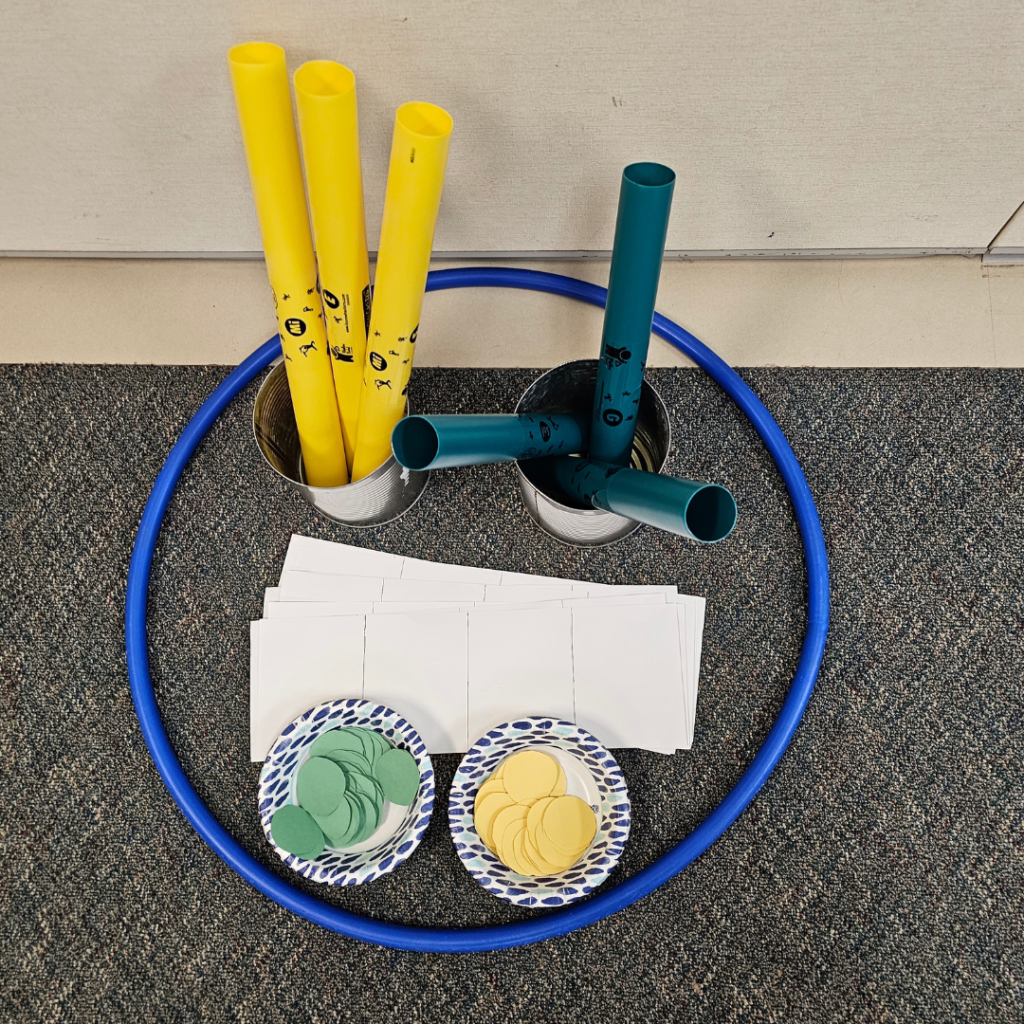
Directions
I have my students work in groups of 4-6 students. Each student has their own mat and access to their own dots. If working in partners, one partner is playing their composition while the other partner is making a new composition. Students can choose to have one (quarter note) dot or two (eighth note) dots per beat box. The yellow dots are placed LOW on the paper, the green dots are HIGH. Students play their Sol-Mi songs on Boomwhackers.
Differentiation
High Students: My higher students asked some questions I didn’t expect from 6 year olds. Some asked if it was possible to have three dots in one beat. I told them, “yes, but we won’t really work with that until you are in middle school.” Others worked with playing two notes at one time – either in the form of chords, or playing eighth notes with one hand for the low note, and a high quarter note with the other. As long as they could show me they could play it – and play it right – I allowed them to compose these higher level melodies.
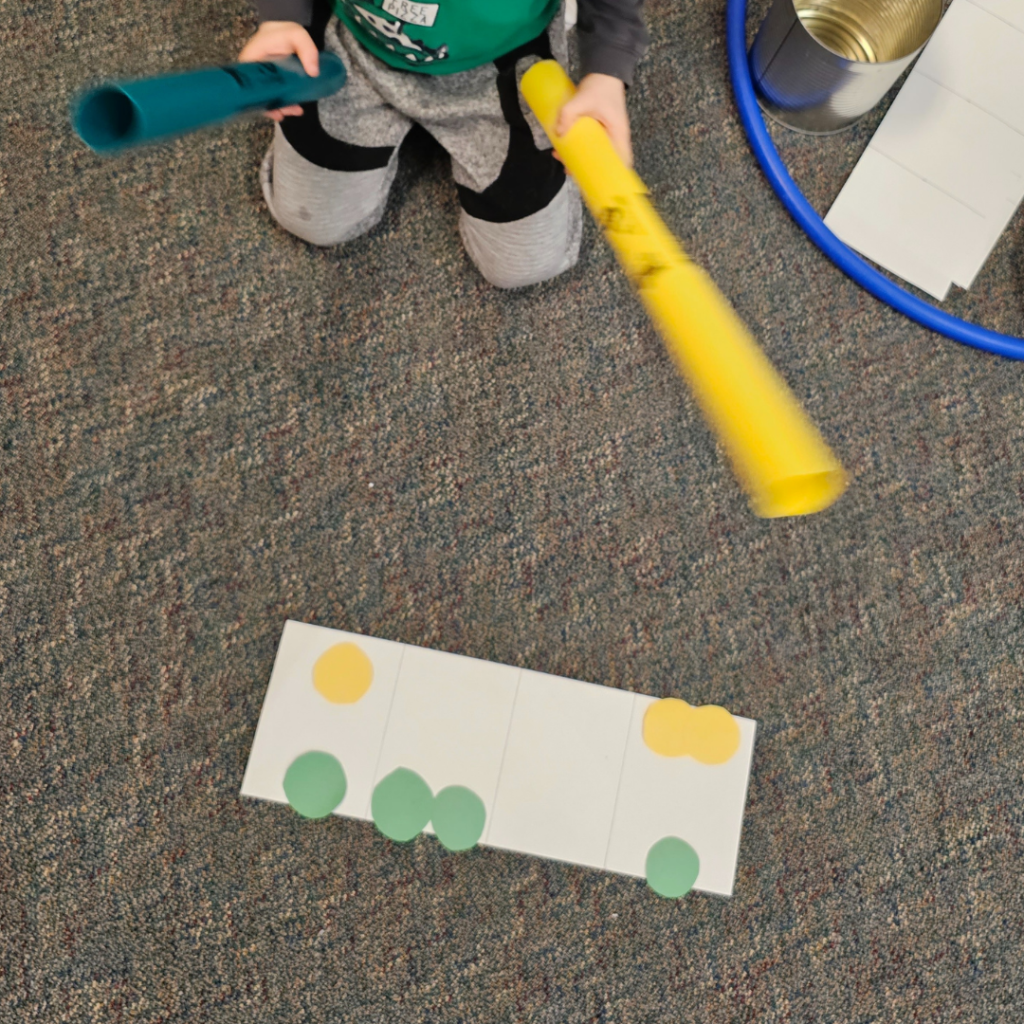
On-Grade Level: These students mostly stuck to quarter notes while composing with boomwhackers. They may have used one or two “two dot” rhythms, but they mainly stuck to what had been modeled . I encouraged this group to think about how they could change it based on their ability to accurately play what was heard.
If students made a mistake, I would say things like, “I heard you play only once here (pointing to the measure), but I saw two dots on that beat. What can you do to make what is written match what I heard?”
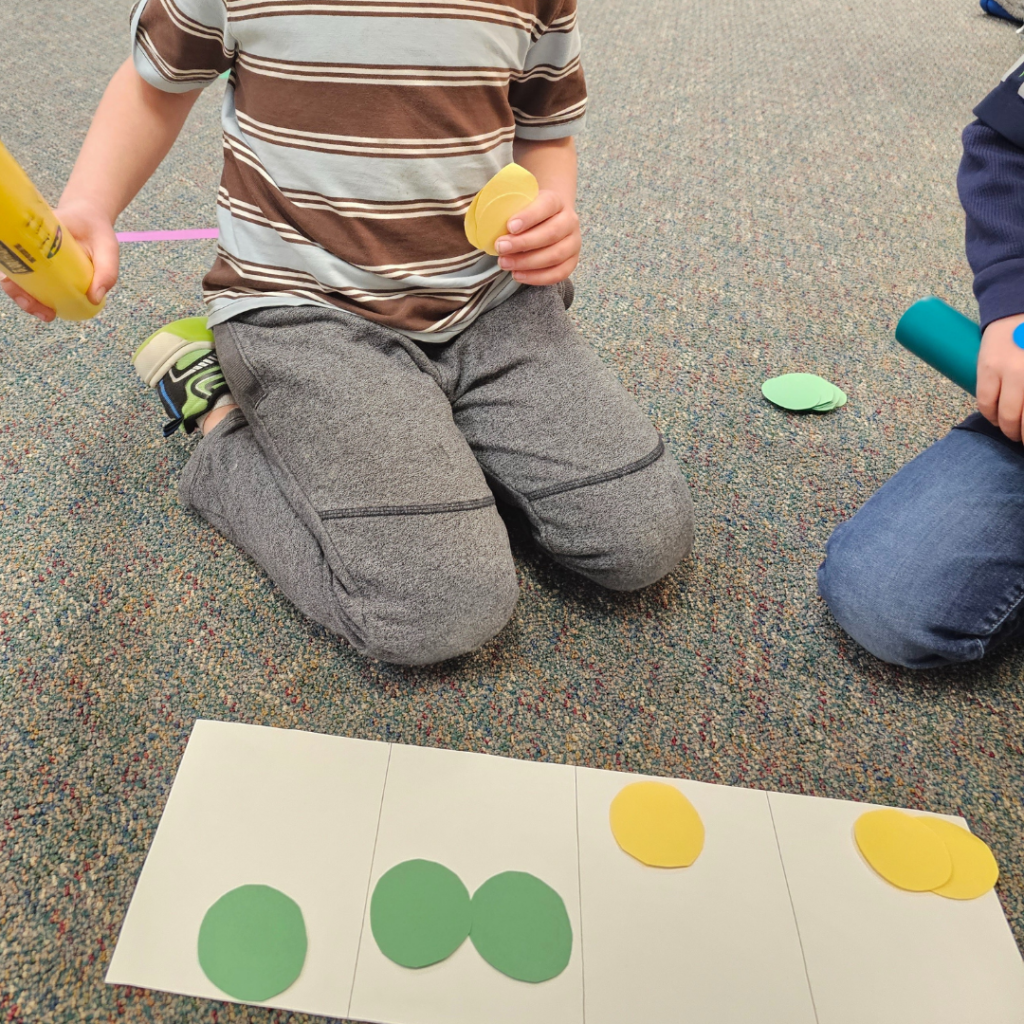
Approaching Students: For students who needed more help, I removed all of the dots from around them except 4-8 dots. I helped walk them through making a 4-count composition only using one dot per box. Removing the choice of more dots gave them smaller parameters to meet the basic standard requirements.
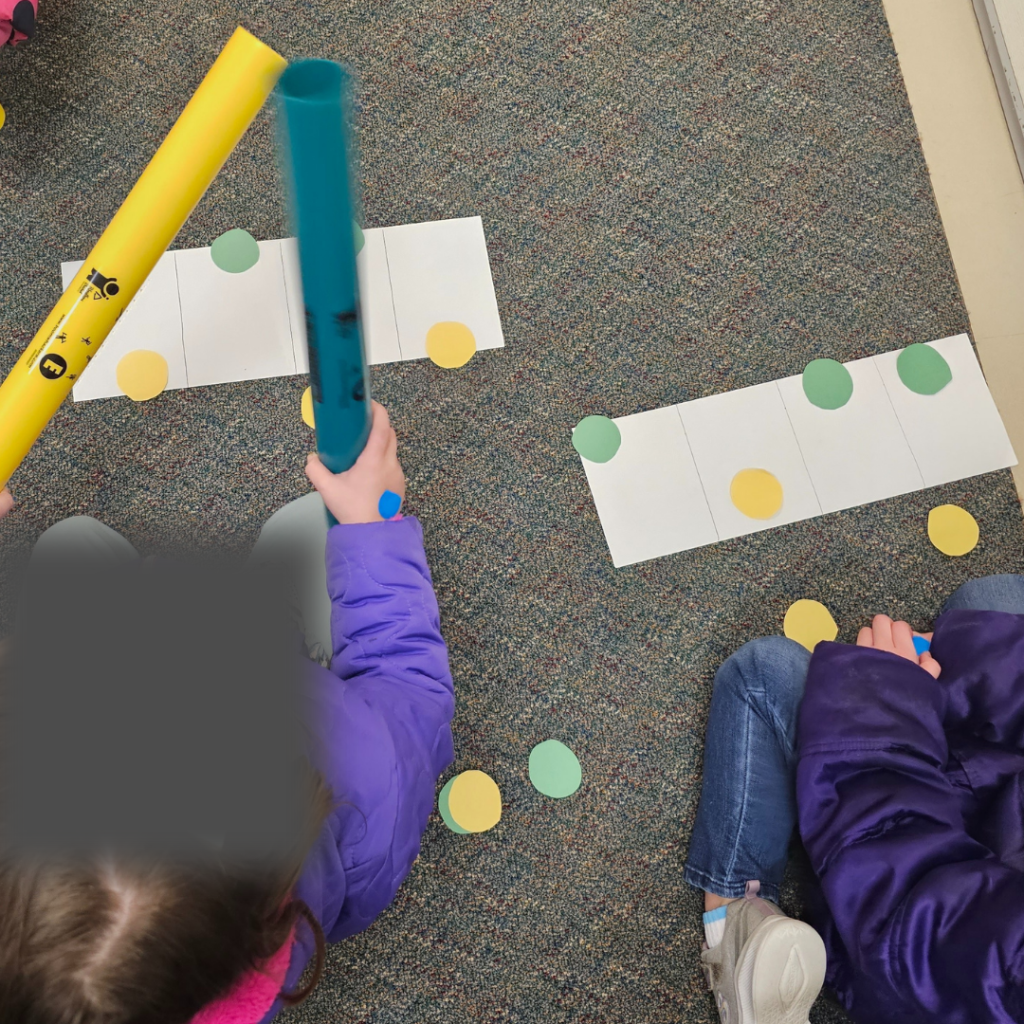
I hope you enjoy using this composing with Boomwhackers center activity in you music room! Drop me a comment if you have any questions!

